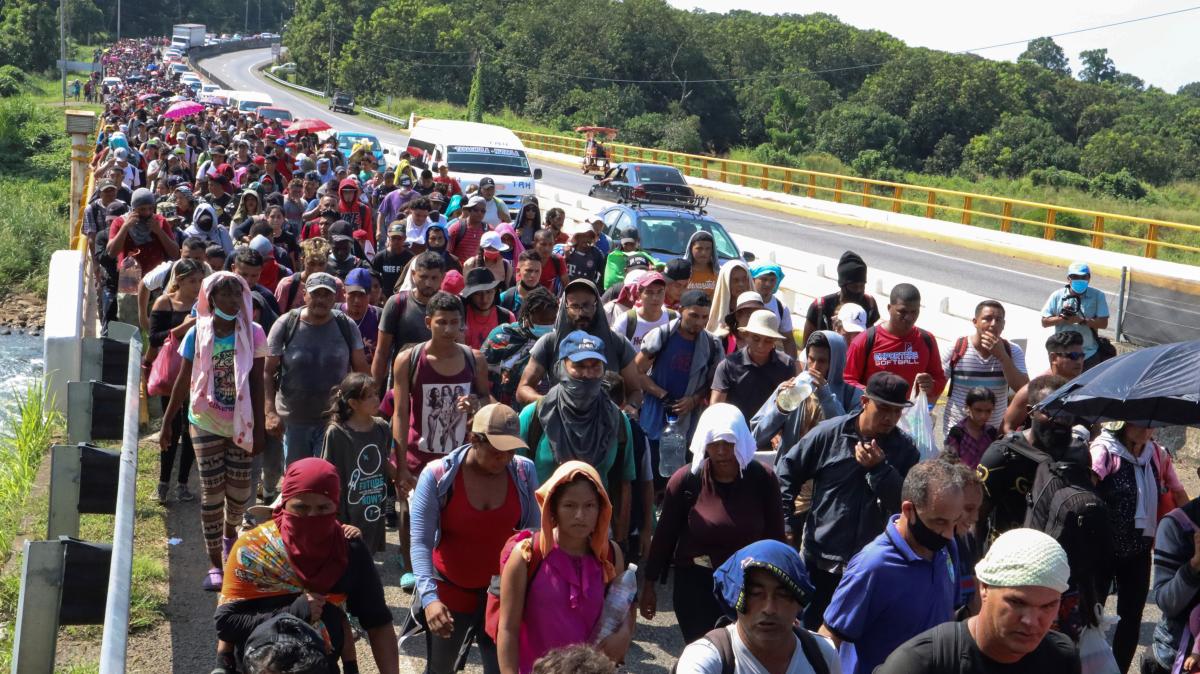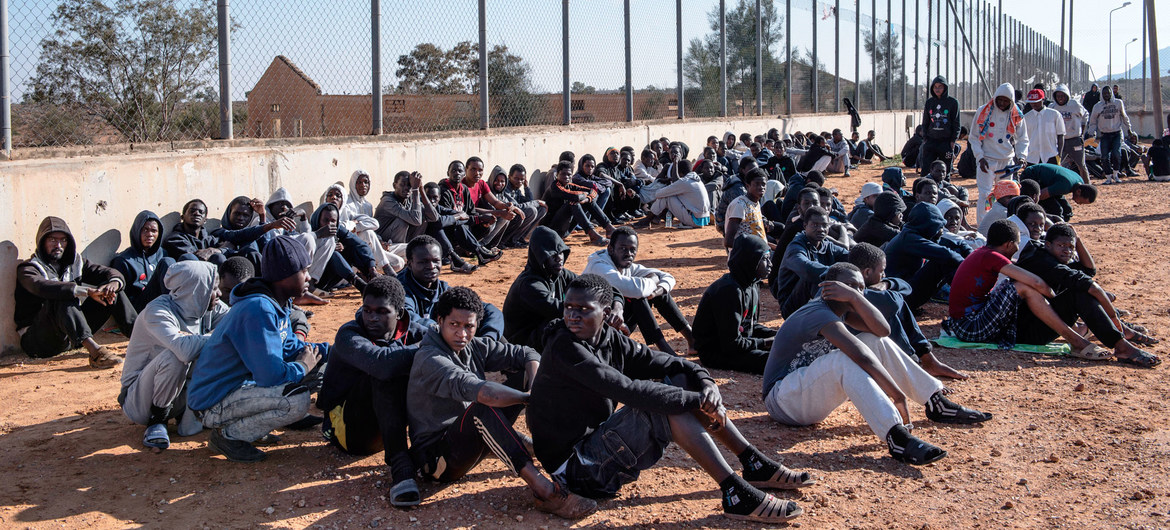Economy and migration
One of the focal causes of the migration movement across the globe historically and contemporary is an imbalance between population and economic resources which very often is leading to population movements or migration from one place to another. From the very general economic perspective, migration is bringing some population from regions that suffer from a lack of capital resources or arable land to those that are richer (for instance, from East to West Europe). However, during the last decades, many developed (post-industrial) societies have gone through cycles of economic recession and, therefore, are becoming more reluctant to accept more immigrants if they are not useful in specific economic areas of activity.
Nevertheless, we have to keep in mind that migration is not a purely economic phenomenon as it emerges out of a complex mix of economic scarcity, warfare, ethnic conflict, religious persecution, political repression, or environmental degradation. Migration was playing all the time a major role in the history of humans but economic migration was surely the focal role. Most people who have immigrated to the richer countries of the world have done so in search of a higher standard of living and better life. Exceptions exist like, for instance, the African black slaves brought to both Americas before the mid-19th century.
This is hardly surprising, as higher birthrates in the developing world have produced an enormous population that has sought work in the (post)industrialized world, with its comparative wealth, lower birthrates, and aging citizenry. For example, it was estimated that as of 2002, circa 175 million people lived in countries other than those in which they were born. That is, in fact, double the number of migrants since 1975. Europe in 2003 was leading with 56 million, followed by Asia 50 million, and North America with 41 million immigrants. However, despite attempts in many Western countries to drastically restrict immigration, the influx of immigrants is surpassed in terms of the rate of migration only by the two surges of European immigration into the USA from 1900 to 1945, when the USA imposed very few immigration restrictions.
Although most migrant workers are male, women constitute a high proportion of economic migrants as well. Social, environmental, and economic factors often affect women more strongly than men in poor societies and can create a different set of incentives for migration. Women in rural areas who do not have the right to own land or who face a life of virtual servitude after marriage may try to escape poverty by moving abroad, even though, in addition to poor and unsafe working conditions, female migrants also typically face a disparate burden of child care, and many are subjected to violence or forced into prostitution. Nevertheless, thousands of women emigrate each year to find jobs in other countries, and just as with male migrants, many remit a substantial portion of their wages to their home countries.
Categories of refugees
In addition to those people who are seeking economic opportunity, many migrants may as well be fleeing from war and oppressive dictatorships. Such types of immigrants are collectively referred to as refugees, for the reason that they are forced to flee their home countries for reasons not related to their economic standard of living. The UN High Commissioner for Refugees (UNHCR – an OUN agency that directs and coordinates international action to protect refugees and solve refugee problems, including assisting refugees who seek asylum and those who seek to return home voluntarily) defines a refugee in its 1967 protocol as a person who:
“owing to a well-founded fear of persecution for reasons of race, religion, nationality, membership of a particular social group or political opinion is outside of the country of his nationality and unable or, owing to such fear, is unwilling to avail himself of a protection of that country”.
However, many countries in the world suspect that new arrivals may be claiming some sort of persecution in order just to enter a country for the very purpose of securing a better job or social subsidies. These countries (G7) tend to accept refugees who are fleeing persecution by imposing more restrictions on economic migrants.

Refugees can be either displaced within their own countries (internally displaced peoples) or flee to neighboring states or regions (externally displaced peoples). There are those who are counting only externally but not internally displaced peoples as real refugees. Some recent statistical data can be used as an indication of the dimension of the problem of the refugees on the global level: there were 2.5 million refugees in 1970, 8 million in 1980, and more than 12 million in 2001 that is approximately 1 in 300 people on the earth. At the beginning of 2002, for example, there were a total of 20 million people “of concern” – which include refugees, asylum seekers, and internally displaced people. It is, nevertheless, not surprisingly at all that the major part of global refugees tends to be from poorer regions of the world. At the beginning of this century, the top three states where refugees originated have been Afghanistan (3.8 million), Burundi (554.000), and Iraq (530.000) while at the same time the three main host states have been Pakistan with 2.2 million, Iran with 1.9 million, and Germany with 988.500.
African countries have been particularly prominent as sources of internal refugees especially those of South Africa, Sudan, Mozambique, Angola, or Liberia. Since 1991, the former Yugoslavia, Iraq, Burma/Myanmar, the Philippines, and parts of ex-USSR have been as well as identified as places where those who left or lost their homes remained, voluntarily or not, within their own country. Most of these people fled from conflicts within countries, especially Afghanistan, Rwanda, and Bosnia-Herzegovina. Conflicts in the 1990s in the former Yugoslavia, Burundi, Somalia, and Eritrea-among others-has added to refugee statistics. For instance, inter-ethnic conflict and genocide in Rwanda in 1994 drove hundreds of thousands of refugees to flee to Congo and Tanzania. Perhaps some 600.000 returned by 1996, but huge numbers remained in neighboring countries for a long time.
In addition to fleeing because of conflict, in many other developing countries, hundreds of thousands of people leave their home regions because of soil exhaustion, chemical contamination, lack of access to clean water, or inundation of towns and farms, becoming environmental refugees. The refugee problem is, therefore, growing at an alarming rate both within and between states. In fact, the numbers of internally displaced persons are on the rise, and internally displaced persons are now considered the second-largest group of people of concern to the OUN High Commissioner for Refugees after refugees fleeing to neighboring states or regions. Clearly, the period after the Cold War is characterized by increased movement and, disturbingly, increased dislocation.
Consequences of migration
The influx of immigrants, whatever their real reasons for migrating are, has periodically provoked backlashes by the host-country populations. In many cases, reactions can be racially, ethnically, confessionally, or politically motivated against the newcomers. Nativist movements which are political movements favoring the native-born and discriminating against immigrants arise in Western countries and gain strength during economic crises when immigrants are usually blamed for unemployment and rising crime rates. For instance, in the USA the political pressure by the Nativist movement prompted the passage of the Immigration Act of 1924, which discriminated against potential immigrants from Southern and Eastern Europe and made stronger already existing restrictions against the immigrants coming from Asia. The economic recession of the early 1990s in Europe and North America similarly prompted calls for limiting foreign immigration. It is estimated that currently there are circa 40% of the states around the world to have policies aimed at lowering immigration.
Most West European countries were profoundly transformed by immigration in the 20th century. Large-scale migrations took place in Europe during the first decades after WWII. The Mediterranean regions provided West Europeans with cheap labor, while migrants moving from Turkey, North Africa, Greece, Portugal, South Italy, and South Spain have been for a period actively encouraged by host countries that have been facing acute shortages of the labor force. Several West European states like Germany, Belgium, Sweden, or Switzerland have considerable populations of migrant workers, while, at the same time, countries that used to be colonial powers in the 19th and 20th centuries are experiencing an influx of immigrants from their former colonies like France (Algerians), the UK (Indians, Pakistani, etc.), or the Netherlands (Indonesians).
Citizens of currently 27 EU Member-States are able to move freely (according to the Schengen Zone Agreement) from one country to another, but at the same time, EU Member States typically have negative reactions to immigrants from outside EU borders. Faced with waves of immigration from East Europe, the Middle East, and North Africa during the last decades, EU Member States started to close their national borders, at least symbolically. In France, for instance, there were increasingly strict controls on immigration enacted since ex-French colony Algeria became independent in 1962. Such policy was implemented partly as a result of the common French belief that immigrants from North Africa cannot be integrated into French society. During the last 15 years in France, nativist forces such as Le Pen’s National Front have used the immigration issue as a means of gaining political power but at the same time, creating political pressure on the French Government to take further action against immigration.

Germany – a locomotive of the EU, was at the beginning of this century ranked No. 2 in numbers of asylum applications submitted for the post-industrialized states. It was in part as Germany has some of the most liberal asylum provisions in the world. Until the 1990s, while the federal German Government took years processing an individual’s request for asylum, it provided each asylum-seeker with housing, food, clothing, and medical expenses. The UNHCR reported in 1996 that Germany had 350.000 asylum-seekers (of whom only 5% became finally qualified), 430.000 recognized refugees and family members, 500.000 de facto refugees who have been refused asylum but were allowed to stay for legal or humanitarian reasons, and another 320.000 “temporary” refugees from the conflict in ex-Yugoslavia. However, with unemployment persistently high, especially in the former territory of GDR (DDR), the climate in Germany became increasingly conducive to racism and xenophobia (Dresden, Leipzig, and Saxony in general, for instance). Such atmosphere was in many cases leading to hate crimes against “guest workers” and their families. Ultimately, the xenophobic violence led to protests in Germany, but as well as contributed to Germany’s tightening of its asylum laws since the mid-1990s.
Labor migration into and within West Europe slowed down as the post-war boom turned into an economic recession in the late 1970s, but since the fall of the Berlin War in November 1989 and the transformations happening in the countries of East Europe and ex-USSR, Europe, in general, experienced the new waves of economic migrations from East to West. These new waves of migrations are marked by five crucial events:
- The opening of borders between East and West led to the migration in the first 5 years (till 1995) of some at least 5 million people mostly from the Baltic States, Romania, and Poland.
- Civil war and inter-ethnic conflicts in ex-Yugoslavia in the 1990s resulted in a surge of up to 5 million refugees into other regions of Europe.
- Some 400.000 ethnic Germans from Russia and East Europe exercised their immigration and citizenship rights end, therefore, emigrated to Germany.
- The opening of internal European borders following the Schengen Agreement (signed in 1985, came into effect in 1995) increased immigration into countries such as Portugal, Italy, and Spain that are in the frontline of impoverished African lands when migrants had the option of staying in these countries or to move to the North.
- When the EU tightened up its border controls illegal emigration exploded with organized illegal traffic in human beings.

Consequently, many citizens of the Western countries of the EU have the feeling of being invaded by immigrants. Nevertheless, up to the 1990s, the proportion of foreign population legally recorded in the EU as a whole remained 4.5%. In 1982 it was 3.15%. However, as the situation substantially changed in the 1990s, in many West European countries exists a sharp increase in the proportion of foreigners especially in Germany (13%). In the 1990s, Italy suffered the full shock of the disintegration of Albania in 1997 and ex-Yugoslavia including the 1998−1999 Kosovo War. By 1999, it was estimated that the flow of illegal immigration in the EU was around 500.000 per year. Nevertheless, most of the Europeans continue to support culturally and ethnically homogeneous societies and, therefore, such schizophrenia between self-image and the new demographic reality of Europe is pressing for re-definition of European identity.
Another feature of the new waves of migration in Europe and elsewhere is the rise of the global criminal economy which finds a good opportunity to prosper in a half-integrated institutional system. National controls are, in fact, easily bypassed by the new mobility of capital, people, and information. On the other hand, European police controls are slow to develop, precisely because of the resistance of national bureaucracies to give up their monopoly of power.
It has to be noticed that since 1990, the geographical patterns of European migration have also shifted, with the lines between countries of origin and countries of destination becoming increasingly blurred. Countries in South and Central Europe have become destinations for many migrants, a notable departure from earlier immigration trends.
A special feature of the new migration waves during the last 30 years is that of ethnic “unmixing”. In ex-USSR, former Yugoslavia, and some Central European states, shifting borders, changing political regimes or the outbreak of violent conflicts have led to migrations on the principle of ethnic affinity. A clear illustration of this can be found in the case of the huge number of ethnic Russians who found themselves living in newly independent states like the Baltic States, Ukraine, or Kazakhstan following the break-up of the USSR. However, many of them were choosing to migrate back to Russia as part of a process of ethnic unmixing. Something similar occurred on the soil of the former Yugoslavia as well.
To be continued














Comments